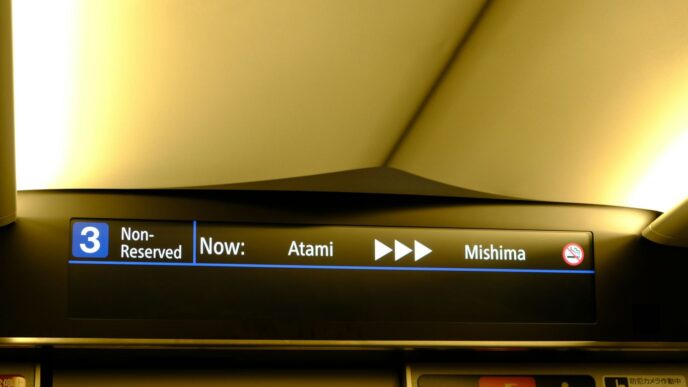Thinking about a job at Amazon? You’re not alone. Amazon careers are on the radar for thousands every year, whether you’re a new grad, a seasoned engineer, or someone looking for a fresh start. The process can seem overwhelming—there are a lot of steps, and Amazon’s culture is a bit different from most places. In this guide, I’ll break down what you need to know, from figuring out if you’re a good fit to making your application stand out and preparing for those unique interviews. Let’s make the process a little less mysterious and get you ready for your Amazon journey.
Key Takeaways
- Amazon’s Leadership Principles are at the heart of hiring—know them and use real stories to show you fit.
- Tailor your resume for each Amazon role, using keywords and the STAR method to highlight achievements.
- Expect a multi-step interview process, including online assessments, phone screens, and the well-known “Loop.”
- Networking and referrals can boost your chances, especially if you connect with current employees.
- Stay up-to-date on trends like AI, remote work, and sustainability—these are shaping Amazon careers in 2025.
Unlocking the Amazonian Mindset: Leadership Principles and Cultural Fit
Amazon isn’t just about fast shipping or things showing up at your door in cardboard boxes. When people talk about working there, almost everyone brings up the mindset side of things first. There’s this sense that joining Amazon means thinking a certain way and genuinely buying into some very specific ideas about work, leadership, and customers.
Embracing the Day 1 Philosophy
It all starts with what Jeff Bezos called the "Day 1" mindset. At Amazon, every day is supposed to feel like it’s the company’s first—full of energy, risk, focus, and above all, an urge to build new things. That sounds simple, but try keeping that up when you’re no longer a small startup, and suddenly you see the problem. In reality, sticking to Day 1 gets tricky, and some employees have a hard time living up to it, which can slow people down, as folks at Amazon have admitted. If you’re thinking about applying, you’ll want to have examples ready—maybe times when you started something from scratch, or when you zigged while everyone else zagged, and it turned out to be the right move.
Understanding Amazon’s Leadership Principles
Okay, now for the big one: the Leadership Principles. There are 16 of them, and they’re not just stuck on the wall or buried in a dusty handbook. People talk about these things every day, and they come up in meetings, emails, and especially interviews. Here are a few examples and what interviewers look for:
- Customer Obsession: Have you really listened to what customers wanted? Did you change your work because of it?
- Ownership: Do you take responsibility for projects and results as if the company were yours?
- Invent and Simplify: Ever found a way to make something easier or faster, even if it meant breaking with tradition?
- Learn and Be Curious: Do you ask questions? What’s a new skill you learned just because you wanted to?
Here’s a simple table highlighting some of the Leadership Principles and the typical qualities they look for:
| Leadership Principle | What They Expect |
|---|---|
| Customer Obsession | Always put the customer first |
| Ownership | Step up, even when it’s not your job |
| Invent and Simplify | Find easier ways to do hard things |
| Learn and Be Curious | Always ask "why?" and "how?" |
| Insist on the Highest Standards | Never settle for "good enough" |
These principles can feel a bit much at first. Still, if you plan to get through the application, you’ll need to be familiar (and bring real examples from your history—no made-up stories).
Demonstrating Cultural Alignment in Your Application
So, how do you show Amazon you’re not just applying everywhere, but you actually get what matters to them? It isn’t about memorizing lingo—it’s about showing with stories:
- Find a moment when you showed customer obsession. Maybe you went out of your way to actually call a frustrated client, solved their issue, and then changed how your team did things after that.
- Share a time you disagreed with your boss or team—but you committed anyway for the sake of the group’s success. This kind of backbone is big at Amazon.
- Talk about a failure and what you learned. Amazon loves hearing how you got better, not just how you won.
Don’t be afraid to show your quirks. Amazon calls itself “peculiar.” If you’re creative or do things a bit differently, that could actually help you stand out during your Amazon application process. Just know the Leadership Principles, bring your own stories, and show you’re ready for a workplace that lives them out every day—even if some days, it’s a real challenge.
Navigating Amazon Careers: Exploring Job Families and Opportunities
Amazon is a gigantic workplace, and there’s no one-size-fits-all path. Whether you’re looking at tech, business, front-line operations, or something new like AI, there’s probably a fit somewhere inside Amazon’s endless departments. Let’s break down what you need to know before applying.
Tech, Non-Tech, and Operations Roles Demystified
When most people think "Amazon job," they might picture software engineers, warehouse workers, or someone troubleshooting Alexa. But the range is a lot bigger. Amazon divides its roles into a few main job families, each with its own hiring style and career track. Here’s a quick look:
| Job Family | Common Roles | Typical Backgrounds |
|---|---|---|
| Tech | Software Engineers, Data Scientists, UX Designers | Computer Science, Engineering |
| Non-Tech (Corporate) | Product/Program Managers, Marketing, HR, Finance | Business, Marketing, Accounting |
| Operations | Area Managers, Logistics, Process Engineers | Supply Chain, Industrial Eng., Ops |
| AWS & Cloud | Solutions Architects, Cloud Engineers, Sales | Cloud/IT, Comp. Science, Sales |
| Customer Service | Support Associates, Team Leads | Any/Broad experience |
Some of these paths are classic "sit-at-your-desk" jobs. Others, especially in Operations and AWS, are more hands-on or tech-forward. Even if you don’t have a technical degree, Amazon regularly hires people with practical backgrounds for everything from supply chain management to HR.
The Rise of AI, AWS, and Emerging Business Lines
Amazon’s been pouring resources into cutting-edge work, especially in AI and its AWS (Amazon Web Services) division. If you have experience working with machine learning, cloud technology, or data science, now’s your time. AWS is still one of the fastest-growing segments at the company, so think about:
- AI & Machine Learning roles added across departments, not just tech
- Sales and technical jobs in AWS (Solutions Architects, Cloud Support)
- Brand new areas like satellite internet (Project Kuiper) or healthcare services
Frankly, business lines change fast—one year, Amazon’s buying a grocery chain; the next, it’s expanding drone delivery. Stay curious about what’s coming for recent graduates including AWS and Pathways roles.
Internships and Early Career Programs
Not everyone walks in the front door as a full-timer. Amazon’s internship and early career programs are huge seeds for long-term careers. Here’s what you should know:
- Summer internships for students in tech, business, and operations
- Pathways and MBA programs for grads who want to quickly move into leadership
- Lots of roles—software engineering, product management, supply chain, and more
Competition for these programs is fierce, but getting in early can set you up for faster growth and access to mentors. If you’re wrapping up school or switching careers, keep these tracks on your radar.
In summary: Amazon’s opportunities cut across industries and experience levels. The real trick is to map where your skills fit and not rule yourself out too early.
Crafting a Winning Amazon Application: Resume, Cover Letter, and Networking
Getting your foot in the door at Amazon isn’t just about sending out a bunch of resumes and hoping for the best. Your application is your introduction — make it count. Here’s how you can stand out with your resume, cover letter, and smart networking.
Building an ATS-Optimized Amazon Resume
Amazon’s hiring process is serious about filtering out noise, so the first gatekeeper is often software — the Applicant Tracking System (ATS). Here are a few things that work:
- Stick to a classic, chronological layout (skip fancy design, colors, or columns).
- Naturally use words and phrases pulled directly from the job posting — keywords really do matter here.
- Be specific about your impact. Instead of “was responsible for a team,” write, “led a group of 6 to improve delivery times by 30%.”
- Each bullet should reflect Amazon’s Leadership Principles if possible. For example, highlight moments you “took ownership” or “insisted on the highest standards.”
- Customize your resume for every application. A one-size-fits-all approach usually means you end up on the reject pile.
Quick table for how your resume should reflect real results:
| Generic Bullet | Amazon-Ready Bullet |
|---|---|
| Managed team projects | Led a team of 5, launching project X with a 20% cost reduction |
| Responsible for operations | Improved operations flow, cutting delivery time by 2 days |
Highlighting Achievements with the STAR Method
Amazon loves examples and details. The STAR method breaks things down into:
- Situation: What’s the background?
- Task: What was your responsibility?
- Action: What did you do?
- Result: What happened because of it?
For every role or accomplishment you mention, apply this structure. It keeps your answers clear and focused and avoids rambling.
Leveraging Referrals and Smart Networking
It’s not just what you know, but who you know — and how you connect that counts. Referrals can bump you to the next level, but they aren’t something you can request at random. Here are a few tips:
- Reach out to Amazonians politely, and ask for real insights about their day-to-day, not just a referral.
- Attend career events or Amazon-sponsored meetups to meet people organically.
- Check if your alumni work at Amazon and request a brief informational chat.
- If a natural connection develops, a referral could follow — but only if it feels genuine.
For the cover letter, keep it short, focused, and to the point — no more than 300 words, a single page at most. As noted by many hiring managers, respecting limited time goes a long way (Amazon cover letter length).
Remember: Every contact, resume bullet, and conversation should reflect how you fit Amazon’s culture and drive. The clearer you show this, the better your odds.
Mastering the Amazon Interview Process: From Assessments to the Loop

Amazon’s interview process can feel pretty intense and, honestly, a bit different than anywhere else. Every step is designed to see if you can do the job—and if you’ll thrive in Amazon’s unique, customer-focused culture. Below, I’ll break down each part of the experience so you’ll know what’s coming.
Preparing for Online Assessments and Simulations
When you apply, there’s a solid chance Amazon will have you complete some online assessments. These are not just about right or wrong answers—they want a feel for how you solve problems and how your judgment aligns with their Leadership Principles.
Here are some common types of assessments:
- Coding Challenges: For tech and SDE roles. These often show up on HackerRank, debugging tools, or other platforms. They’ll throw you algorithm and data structure problems.
- Situational Judgement Tests: More common in non-tech jobs. You’ll answer questions about what you’d do in different real-life work problems.
- Work Style Simulations: These measure how you approach typical Amazon scenarios—prioritizing, working with teammates, and communicating clearly.
- Writing Samples: For some PM, marketing, or similar roles, well-structured written communication can be the main test.
A little advice: Find a quiet spot, set aside the time (these can last 30–90 minutes), and read every instruction carefully—don’t just click away.
Cracking the Phone Screen Stage
If you do well on the assessment, a recruiter will reach out for a phone screen. Usually this is two calls: one with a recruiter, and another with a hiring manager or technical team member, depending on your role.
- Recruiter Call: This is about your background—why you chose Amazon, what you’ve done, salary expectations, and a quick check on how you fit the Leadership Principles.
- Technical/Team Call: If it’s a tech role, there may be a coding or technical question right on the call. Non-tech? Expect behavior questions and specifics about your past projects.
Use the STAR method (Situation, Task, Action, Result) to give clear examples. Be ready to talk through real experiences—not just hypotheticals.
Acing the Famous Loop and Bar Raiser Interviews
Here’s where it gets real. The Loop is Amazon’s big, final act—think four to six back-to-back interviews (each about 45–60 minutes). Each one is focused on a handful of Leadership Principles.
Here’s how a typical Loop breaks down:
| Interviewer | Focus Areas | Format |
|---|---|---|
| Peer or Team Member | Technical skills, teamwork, role knowledge | Problem-solving, experience questions |
| Manager | Leadership, decision-making | Behavioral and scenario questions |
| Bar Raiser | Raises the quality bar, unbiased LP assessment | Mostly behavioral, cross-team focus |
| (Others) | Varies—customer obsession, invent/simple | Depends on role |
What’s unique? The "Bar Raiser." This person isn’t on the hiring team—they’re there to keep standards high and judge cultural fit.
Steps to succeed:
- Review Amazon’s Leadership Principles over and over.
- Prepare STAR stories for as many of the principles as you can. Have specifics!
- Don’t sugarcoat failures; Amazon likes to see what you learned and how you adapted.
- Keep your answers concise—don’t ramble.
By the end, interviewers meet and compare notes. Only if there’s broad agreement you “raise the bar," do you get an offer.
Amazon’s whole process is about showing—not telling—how you solve problems and fit their way of working. It’s tough, but if you’re ready with real stories and a flexible mindset, you’ll stand out.
Role-Specific Strategies for Amazon Careers
everybody wants a secret formula for landing specific roles at amazon — and while there isn’t a magic bullet, there are some patterns that help. Here’s a practical breakdown, with some real talk about what helps folks stand out in each major category.
Succeeding as a Software Development Engineer (SDE)
Coding isn’t enough — Amazon SDEs need to show real problem-solving and customer focus every step of the way. If you’re aiming for one of these roles, try:
- Mastering data structures and algorithms. Don’t just solve problems — explain your reasoning, and always tie your solution back to the customer.
- Expect system design questions, even for mid-level roles. Think about scalability and real-world tradeoffs.
- Brush up on Amazon’s Leadership Principles. You’ll get behavioral questions (“Tell me about a time…”), and they’re looking for STAR stories that fit the principles.
Table: Example Breakdown of SDE Interview Focus
| Stage | What to Prepare |
|---|---|
| Online Assessment | Coding, logic, basic LPs |
| Phone Interview | DS&A, simple system design |
| Onsite Loop | 2-3 coding, 1-2 design, 2 LPs |
Standing Out as a Product or Program Manager
Being a program or product manager at Amazon is part organizer, part inventor. Here’s what matters most:
- Show you can analyze customer pain points — use data, feedback, or personal research to make a case.
- Communicate tradeoffs clearly. Whether it’s time vs. features or customer experience vs. costs, don’t be afraid to take a stand and defend it with logic.
- Talk about managing cross-functional teams. Give details on handling conflict, setting goals, and measuring outcomes. Use the STAR method.
For insight into how large initiatives get off the ground, check out teams behind strategic initiatives.
Excelling in AWS and Customer Service Positions
Amazon Web Services (AWS) is all about technical depth and customer empathy, while customer service roles are focused on rapidly solving problems and building trust.
For AWS roles:
- Know your basics in cloud architecture or support (depending on role).
- Be ready to explain complicated tech in plain language — think of how you’d explain it to a family member.
- Show that you keep up with the pace of change in cloud. Give an example of adapting to new tools or requirements.
For customer service:
- Demonstrate how you’ve managed tough customer interactions. Did you turn a negative into a positive?
- Show “ownership” — if you fixed a broken process or suggested an improvement, mention it!
- They’ll check your comfort with ambiguity; explain how you stay calm and resourceful under stress.
It really comes down to this: Amazon wants people who can get the job done, adapt on the fly, and never lose sight of what the customer needs. If you can back up your stories with clear examples — and keep your ego in check — you’re already ahead.
What to Expect After Your Amazon Interview: Offers, Negotiation, and Next Steps
So, the interviews are finally done. Maybe you’re still obsessing over that one answer, wondering if you rambled too much. Either way, once the loop is over, what happens next? Here’s what you can expect, step by step.
Best Practices for Post-Interview Etiquette
Don’t just wait in silence. Stay engaged, but don’t overdo it. Here’s a quick list of what works:
- Send a thank-you note to each person who interviewed you within 24 hours. Mention a specific topic or moment from your chat—nobody likes a copy-paste message.
- Sit tight for updates. Amazon usually gets back to you within 5 business days, but sometimes it drags out a bit. If you haven’t heard anything by a week, it’s okay to nudge your recruiter politely.
- When you finally get word—whether a yes or no—respond promptly and professionally. If it’s a “no,” ask for feedback. Sometimes you’ll get it, sometimes not, but it doesn’t hurt to try.
Understanding Amazon’s Offer Structure
Amazon’s job offers tend to come with more parts than you might expect. It’s not just about salary—here’s how offers often break down:
| Component | Typical Structure |
|---|---|
| Base Salary | Yearly, paid monthly |
| Sign-on Bonus | Usually split over 1-2 years |
| RSUs (Stock Options) | Vest over 4 years (5%, 15%, 40%, 40%) |
A quick thing about the RSUs—they’re ‘backloaded’. That means most of your stock will vest in your third and fourth years, so plan your financial goals with that in mind.
Negotiating Compensation and RSUs
A lot of people feel weird negotiating, but at Amazon, it’s totally normal. Here’s how to do it without sending yourself into an anxiety spiral:
- Research what others in your role, level, and city are actually getting. Sites like Levels.fyi are gold.
- If you have competing offers, this is the time to mention them—but keep it cool and factual.
- Most negotiations at Amazon revolve around the sign-on bonus and RSUs rather than the base salary, which is pretty fixed for each level.
- Don’t just focus on base pay. Stock and bonus can be a huge portion of your total compensation.
- Before you sign anything, make sure you understand how vesting works and what each number means for your long-term finances.
If you decide not to accept, do that graciously. You never know if your path will cross with Amazon again.
In short: keep the communication friendly, review every part of your offer, and don’t be afraid to ask questions. You worked hard to get here—make sure it’s the right fit for you and your life.
Future-Proofing Your Amazon Application: Emerging Trends in 2025
It’s 2025, and getting a job at Amazon looks very different from just a few years ago. If you want to avoid having your application end up in the "no" pile, you need to pay attention to what Amazon cares about right now—and what’s coming soon. Knowing how to talk about AI, staying up to date with remote work policies, and even understanding the company’s approach to the environment can all give you an edge. Let’s dig into the major trends you can’t ignore.
The Growing Role of AI and Tech Literacy
Artificial intelligence is everywhere at Amazon, not just for the Alexa team or the machine learning folks. Understanding how AI shapes the future of work—even in non-technical roles—is no longer optional.
- You don’t have to be an engineer, but you should know basic AI concepts that affect your field (think "automation in marketing" or "AI-driven logistics").
- Amazon likes to see curiosity, so a candidate who follows tech blogs or takes short online AI courses stands out.
- Even interview questions for project managers and business analysts now often involve "How would you use data/automation to solve X?"
Here’s an example of how some roles compare in terms of expected AI knowledge:
| Role | Basic AI Familiarity | Advanced AI Skills |
|---|---|---|
| Software Dev Engineer (SDE) | ✅ | ✅ |
| Operations Manager | ✅ | |
| Finance Analyst | ✅ | |
| Customer Service Rep |
Remote and Hybrid Work Expectations
Remote work isn’t what it used to be, and Amazon’s policies change fast. Some teams are back in the office, others are hybrid, and a few are mainly remote.
- Double check the job description for location requirements—and ask your recruiter if you’re not sure.
- If you mention remote work, show how you’ve thrived in that setting before. Amazon will want to know you can deliver results no matter where you sit.
- Be ready for questions about collaboration tools or how you manage time and priorities when working from home.
Here’s what to keep in mind:
- Team-based flexibility: Some departments have full remote options, while others expect in-office time.
- Best practice: Include concrete examples of remote collaboration in your STAR stories.
- Stay informed: Amazon adjusts these rules often, so check before each application or interview.
Embracing Sustainability and Social Responsibility
Amazon’s goals for sustainability are more public—and more ambitious—than ever. It’s not just lip service. If you can show you’ve worked on projects that are good for the environment or society, it’s a real plus.
- Read up on Amazon’s latest sustainability reports so you know where their efforts are focused.
- Mention any past work or volunteering tied to environmental or community impact (no matter how small—it counts!).
- If you’re in supply chain, ops, or product design, showing awareness of eco-friendly practices can be a differentiator.
Quick tips for weaving this in:
- Choose one story for your interview that connects to a social or environmental impact.
- Use concrete numbers or outcomes if you can ("reduced paper use by 20%," for instance).
- Don’t force it—Amazon can spot canned answers a mile away.
Staying ahead of these trends won’t just make your application stronger—it’s what Amazon expects from candidates aiming high in 2025. Research, adapt, and keep learning, and you’ll be in a much better place when the recruiter calls.
Conclusion
So, that’s the scoop on getting a job at Amazon. It’s not the easiest process out there, but it’s definitely doable if you put in the work. From making sure your resume lines up with what Amazon wants, to practicing those STAR stories, and learning the Leadership Principles inside and out—every step matters. The interviews can feel intense, and sometimes you might not get it on your first try. That’s okay. Lots of folks have to apply more than once. If you’re serious about joining Amazon, keep at it, stay honest about your strengths, and don’t be afraid to show what makes you a little different. Whether you’re aiming for a tech gig, a customer service spot, or something in between, remember: Amazon is looking for people who care about customers and aren’t afraid to solve tough problems. Good luck, and maybe I’ll see you in the (virtual) halls of Amazon one day!
Frequently Asked Questions
How important are Amazon’s Leadership Principles when applying for a job?
Amazon’s Leadership Principles are at the heart of everything the company does. They guide how teams work, make decisions, and even hire new people. When you apply, it’s important to show how you’ve used these principles in your own life. Giving real examples of times you solved problems, took ownership, or helped others can make your application stand out.
Should I change my resume for each Amazon job I apply to?
Yes, you should change your resume for every job you apply for at Amazon. Use keywords from the job description and show how your skills and experiences match what the job needs. This helps your resume get noticed by both the computer system and the hiring manager.
What is the ‘Bar Raiser’ interview at Amazon?
The ‘Bar Raiser’ is a special interviewer at Amazon who makes sure new hires are a great fit for the company. They look for people who can make the team better and who really live Amazon’s values. To prepare, think about times you showed leadership, solved tough problems, or helped others succeed.
What can I expect during Amazon’s online assessments?
Amazon’s online assessments test your job skills and how you work. You might answer questions about your work style, solve problems, or do tasks like you would on the job. Make sure you’re in a quiet place and read all instructions carefully. These tests help Amazon find people who are a good fit for the company.
How does Amazon’s offer package work?
If you get a job offer from Amazon, your pay will usually have a base salary, a sign-on bonus, and stock units called RSUs. RSUs are shares in Amazon that you get over a few years. It’s a good idea to learn how the stock part works so you can understand your total pay.
Can I negotiate my job offer with Amazon?
Yes, you can try to negotiate your offer, especially if you have other job offers or special skills. You might be able to get a better sign-on bonus or more stock units. Be polite and explain why you think you deserve more. Remember to research what others in similar roles get paid, so you know what’s fair.














